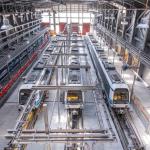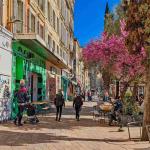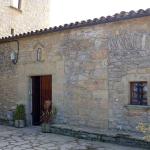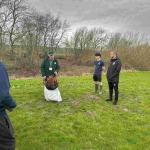Thessaloniki gets ready for its metro launch in November
The underground rapid transit lines have been under construction for almost two decades due to various project delays
 TheMayor.EU logo
TheMayor.EU logo 
The underground rapid transit lines have been under construction for almost two decades due to various project delays

The cross pinnacle on the Tower of Jesus Christ will be ready to receive visitors in 2026 on the centennial of Gaudi’s death

Now you can get your wine in Talence by paying directly in Bitcoin

That’s because the state has to spend money on updating the railway infrastructure rather than subsidizing the cost of the popular pass

Steffen Romstöck said that he would respect the residents’ choice and would take over the helm of the municipality, even if he didn’t run

The measure, which will come into force from 1 January 2025, will be partial and temporary…for now

Rethinking renewable energy sources for the urban landscape

But operating them is still illegal under the country’s legislation

The examples, compiled by Beyond Fossil Fuels, can inform and inspire communities and entrepreneurs that still feel trepidation at the prospect of energy transition

Now you can get your wine in Talence by paying directly in Bitcoin

Rethinking renewable energy sources for the urban landscape

The examples, compiled by Beyond Fossil Fuels, can inform and inspire communities and entrepreneurs that still feel trepidation at the prospect of energy transition

The underground rapid transit lines have been under construction for almost two decades due to various project delays

Plus, it has a unique modular design that allows it to be shortened and lengthened like a train

At least, that’s the promise made by the mayor of Paris, Anne Hidalgo

Despite its church-y name, the district has long been known as the hangout spot for the artsy crowds

At least, that’s the promise made by the mayor of Paris, Anne Hidalgo

Hostal de Pinós is located in the geographical centre of the autonomous region

On the eve of the new academic year, the ranking considers several distinct but essential factors


Following a successful trial phase, these quiet areas will now be available on all main routes in the country

The academic institution shows a deeper understanding of the well-being of its students











The town can be proud of its connection to settlements dating back to the Neolithic Age. Ever since then, not only has the town evolved but so has its name, meaning "slowly running water". 8 September 903 is a memorable date, as then the town was officially mentioned in a document for the first time. Several years later the town was destroyed but was resettled. Centuries later the Ottomans razed the town yet again, afterwards, the Black Death killed many in 1679. Still, Mödling managed to survive, the population rose and successfully rebuilt its heritage.
In 1343 the town was granted the rights to be a Market town by Duke Albrecht II and in 1875 it was officially declared a city.
Mödling is the capital of the Austrian district of Mödling. It is located approximately 14 km south of Vienna. Woodland occupies much of the municipality, which is part of the Föhrenberge 'Pine Mountains'. The population is 20,426 (2010).
Most of the economy in the city is today sustained by SMEs. During the old days though, several large industries had established their plants here because of the convenient rail-connection. The biggest ones have moved to Wiener Neudorf into the 'Industriezentrum Niederösterreich Süd'.
Shopping City Sud (SCS) is one of the largest shopping centres in Europe. It is located within the boundaries of the district of Mödling, south of Vienna.

The Mödling area in the Vienna Forest is rich in old castles (Burgen) and ruins. Of the castles Castle Liechtenstein is the most famous and biggest among them. It was owned by the wealthy family who later founded the eponymous principality. Burgruine Mödling is one of the oldest ruins in the area, dating back to the 11th century. The Black Tower (Schwarzer Turm) looks out over downtown Mödling from the Calendar mountains. It was built more than 200 years ago and nowadays is private property. There is also a 200-year-old amphitheatre nearly buried in the woods. It was built in the same period as the Black Tower and served as an important cultural centre for the local population.
Address: Pfarrgasse 9, 2340 Mödling